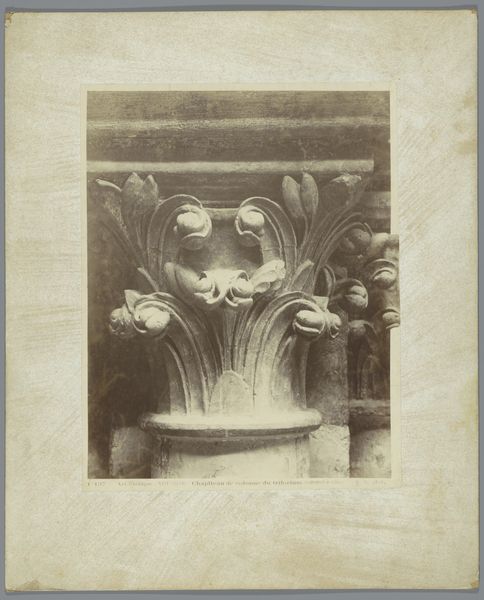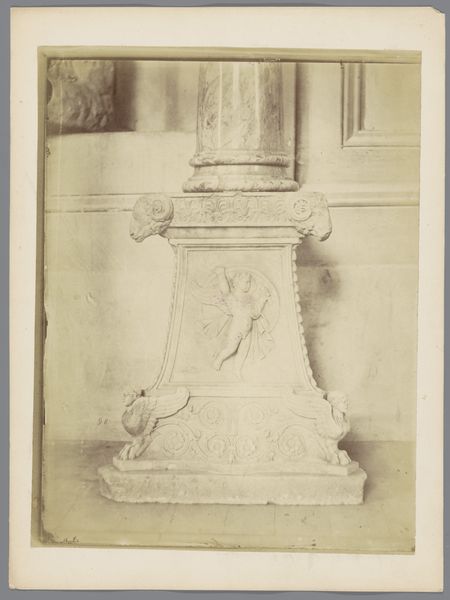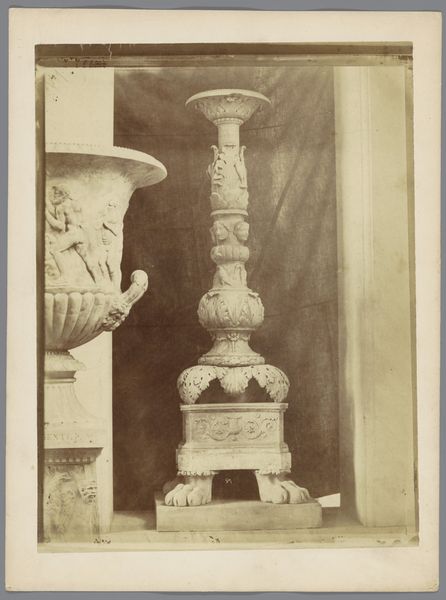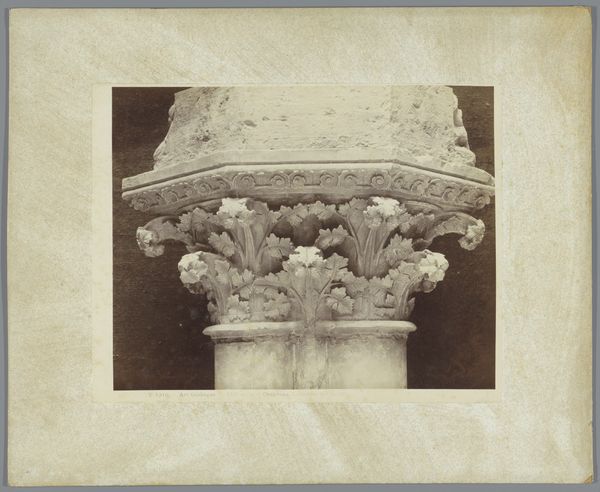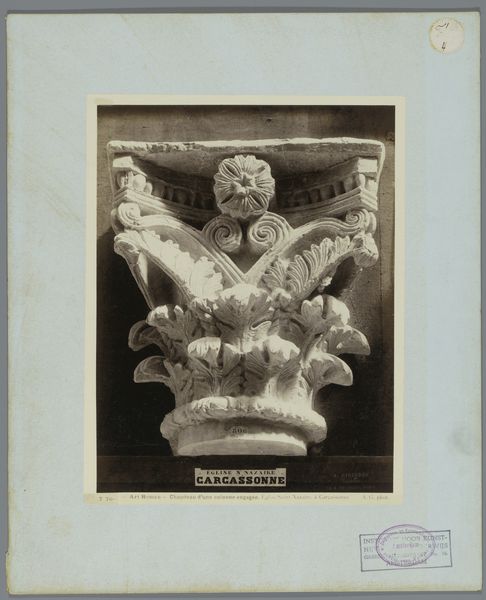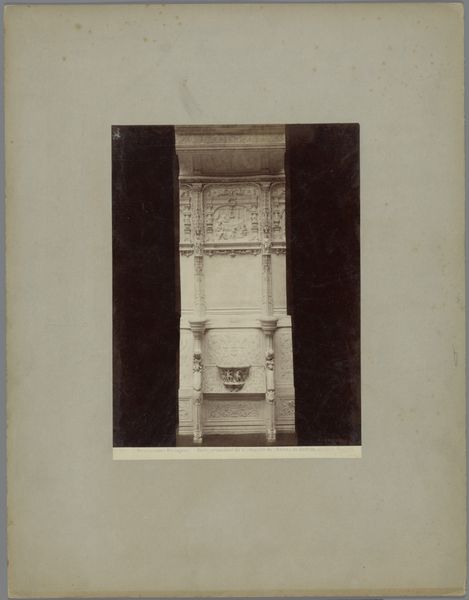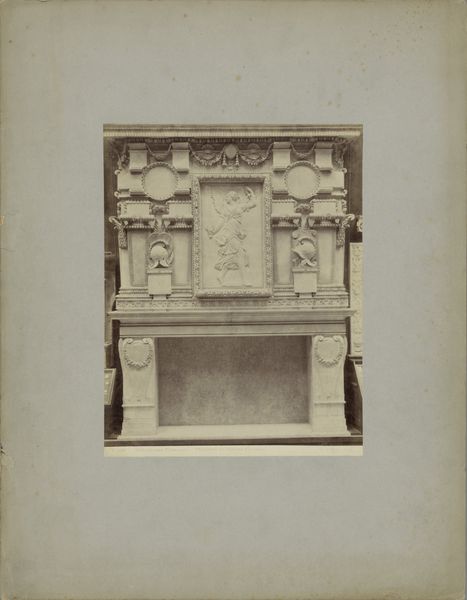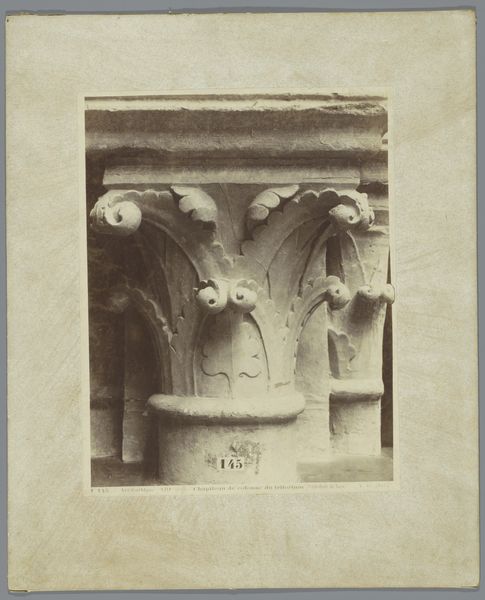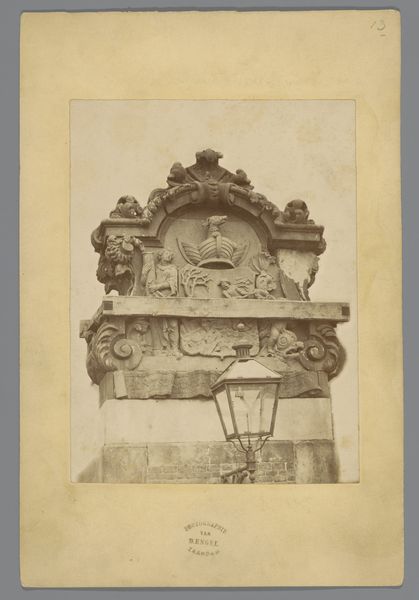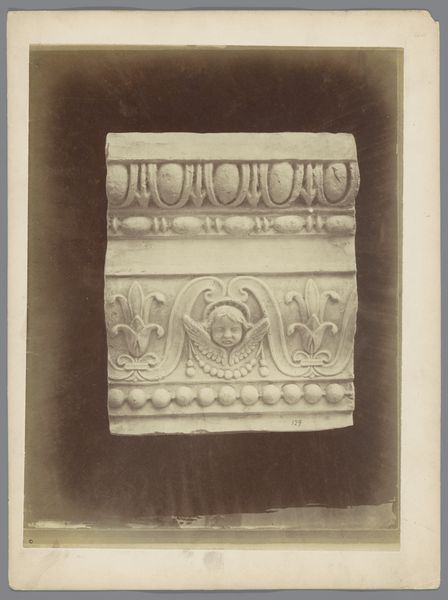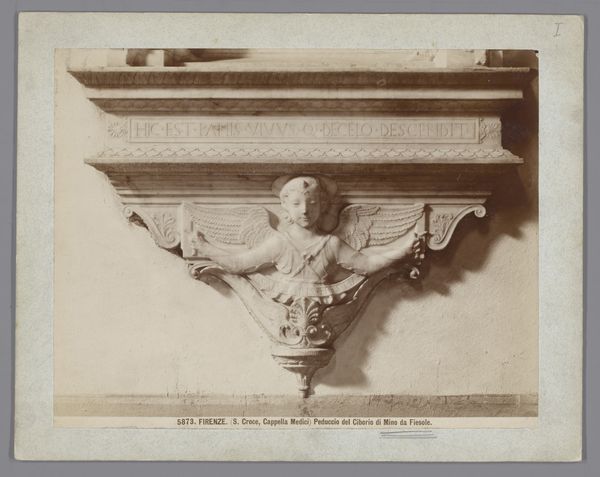
Afgietsel van een kapiteel in de Kathedraal van Laon c. 1875 - 1900
0:00
0:00
adolphegiraudon
Rijksmuseum
carving, print, photography, sculpture
#
carving
# print
#
sculpture
#
photography
#
romanesque
#
sculpture
#
carved
Dimensions: height 259 mm, width 202 mm
Copyright: Rijks Museum: Open Domain
Curator: Here we have an interesting photograph by Adolphe Giraudon dating from around 1875 to 1900. It's titled "Afgietsel van een kapiteel in de Kathedraal van Laon," depicting a cast of a capital from Laon Cathedral. Editor: My first thought is, "grand." It's stark and incredibly detailed; the heavy shadows give the carving a real sense of depth, despite it being a photographic reproduction. Curator: Exactly! Giraudon's photography played a key role in disseminating Romanesque architectural details. This photograph served as a vital record and educational tool during a period of intense architectural restoration and study across Europe. The Laon Cathedral, an early Gothic masterpiece, was a subject of great interest. Editor: So it's a copy of a copy, in a way? I wonder about the politics of reproduction at the time. Access to these cultural treasures was increasingly democratized through photography, but it also reinforces a certain colonial gaze, doesn't it? What stories are left untold, or unseen in this capture? Curator: It's a fair point. The accessibility afforded by photographs allowed wider audiences to appreciate and study these works, influencing architectural styles and preservation efforts. But it also enabled a detached, objectified view. Editor: It feels like the start of mass media applied to cultural heritage. Look at the stylized leaves. You can almost feel the weight of the stone, the precision required to carve such intricate details. It must have taken teams of skilled artisans to complete the original capitals. Curator: Yes, and photographs like this highlighted the skill of the original artisans and sparked discussions about craftsmanship in the age of industrialization. This image documented not just the aesthetic, but also served as a template that later inspired other architectural embellishments of buildings. Editor: I appreciate the tension. The desire to document, study, and emulate such an important art style versus the questions it poses regarding power and accessibility to the very notion of ‘culture.’ Curator: Precisely. This seemingly simple photograph encapsulates a complex moment in the history of art, technology, and cultural dissemination. Editor: It makes you consider whose stories and perspectives are valued—and how different visual formats influence public narratives.
Comments
No comments
Be the first to comment and join the conversation on the ultimate creative platform.

